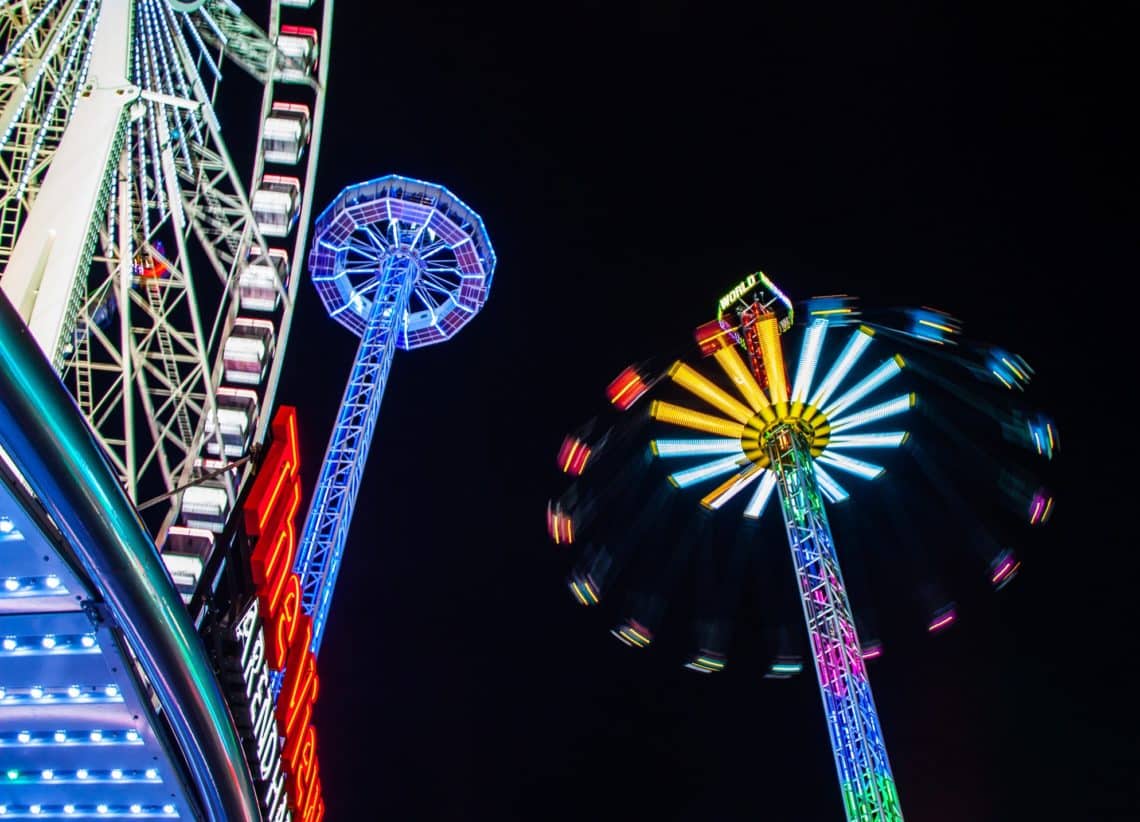Nestled in the Nevada desert is the iconic gambling hub of the world – Las Vegas. For a city that was founded just over 100 years ago, Las Vegas has an illustrious and intriguing history that’s steeped not only in gambling but also in politics, economics and architecture. Here we explore the history of Las Vegas, and chronicle its development from a small settlement in the desert to one of the most famous cities in the world.
Featured Image via John Such@snowpro66
The Development of Las Vegas
Vegas has been inhabited since as far back as 10,000 years ago, when Paleo-Native Americans lived in the area as nomadic tribes. However, the first non-Native American to encounter the valley basin of Vegas was Rafael Rivera, a young Mexican scout.
In 1829, a party of 60 Mexican men were following the Spanish Trail to Los Angeles when the young scout Rivera came across an area abundant with wild grasses and desert spring meadows. Subsequently, this area was named ‘The Meadows’ by explorers – in Spanish, this translates to ‘Las Vegas’.
John C. Fremont arrived in Las Vegas in 1844. Wowed by the natural beauty of the area, Fremont wrote several letters to entrepreneurs and pioneers who subsequently arrived to build a settlement there.
Today, the main street in Las Vegas is named after Fremont – the man credited with making the city what it is today.

Image via Scott Webb@scottwebb
The emergence of the gambling scene
At first, Vegas was a go-between location where travellers could stay before heading off to Los Angeles. But this changed at the turn of the 20th century. 110 acres of land adjacent to the railroad tracks in Las Vegas was auctioned off in 1905, allowing public building to commence. 11 years later, Vegas was incorporated as a city and its economy was predominantly based on local mineral mining.
Had mining remained the primary economic driver of Las Vegas, the city would have undoubtedly suffered more than it did during the Great Depression.
However, its growing gambling scene saw it through that difficult time. In 1931 the State of Nevada legalized gambling and commissioned the construction of the nearby Hoover Dam. An influx of construction workers into Vegas brought a demographic of young men with expendable income, which they could spend on gambling.
While the rest of the country was suffering, Vegas was on the up.

Image via Antoine Angoulvant@antoineangoulvant
Growth of gambling and the attraction of Sin City
The first casinos in Vegas resembled buildings in old Western films. They were often converted saloons with a smattering of table games available, and it wasn’t until 1946 that the first purpose-built casino resort appeared.
Benjamin “Bugsy” Siegel was an infamous Jewish mobster from New York who made his fortune through salubrious means involving theft, robbery and racketeering. Siegel was a big player in the alcohol bootleg trade during the era of prohibition. Once the law was repealed, he turned his hand to gambling.
When Siegel arrived in Vegas, he financed the building of the first casino resort – The Flamingo Hotel – taking the development over from William Wilkerson, who had run out of capital to finance the building.
Siegel was by no means modest. He used the Flamingo as a conduit for his bravado and extravagance. The final costs of the building were estimated at $6 million, which equates to $58 million in modern terms.
In 1947, Siegel’s lifestyle caught up with him as he was murdered in Los Angeles, but his legacy in Vegas was just beginning. The extravagant, boastful style of the Flamingo Hotel & Casino went on to influence further Las Vegas developments.

Image via Fancycrave@fancycrave
The 1950s and 60s: a golden era of casino gambling
Siegel had laid the foundations of a trend that would come to characterise the early 1950s, as an influx of mobsters – including Al Capone’s one-time ally Allen Dorfman – sought to build super casinos in Vegas.
Banks and investment firms were initially reluctant to lend money to developers they viewed as degenerates and mobsters. Therefore the first casino resorts were financed by questionable investors. Demonstrating that they were more than just mobsters, the first casino developers in Vegas invested in making the city a suburban gambling centre and referred to gambling as gaming to legitimatise the act.
Their early success led to wealthy investors taking an interest in Las Vegas – and this is when the city truly became something of a phenomenon. An almost maniacal building boom characterised the 1950s and 60s, and Vegas grew up into a gambling behemoth.
In the years following that period of sudden expansion, savvy developers branched out into the entertainment industry to bring in tourists from all over the country and abroad. Las Vegas was dubbed ‘Sin City,’ as a carefree attitude began to epitomise the city. Relaxed marriage and drinking laws drew in tourists from far and wide, as well what was dubbed morally questionable attitudes to sex and excess.

Famous musical performers, musicians and comedians began to operate in Vegas casinos, further driving tourists to the city – adding glitz and glamour to the already decadent vibes the city was becoming known for. Elvis Presley, Tom Jones and The Moulin Rouge were all regular draws for the public in Las Vegas during this period of massive popularity.
Alongside this, the city was developing a reputation for being the best places in the world to gamble at casinos – a title which it arguably still holds to this day. One of the classic casino games it helped make famous was roulette, where huge sums of money rest on the spin of the wheel.
The sheer excitement of the game is something the city has been able to sustain, as it’s still just as popular in Sin City today. While some people prefer European roulette, many players enjoy a mixture of both.
If you’re interested in seeing what all the fuss is about, it’s a good idea to get familiar with the rules before you play. Many gamers practice online before heading into a land-based casino, and here’s one of the more reputable operators providing an exciting virtual American roulette experience that rivals the real thing.
Threats to Vegas’s dominance and an uncertain future
There are a plethora of threats facing the future prosperity of Las Vegas. One of these threats comes in the form of the Chinese city Macau, which is vying to replace Vegas as the gambling capital of the world.
In fact, many of the Vegas based gambling conglomerates are spending big on developments in Macau to appeal to wealthy Chinese businessmen. In recent years Macau has overtaken Vegas in terms of gambling revenues, yet it still remains second to the city with regards to visitor figures. In 2017, around 42 million tourists visited the city.

Another big threat to the future prosperity of the gambling industry in Las Vegas is the potential legalisation of online gambling. Only a handful of US states currently allow online gambling – however, more are expected to follow.
Several groups have been set up to oppose the legalisation of online gambling, with one of the most prominent being led by Vegas mogul Sheldon Adelson. However, Vegas has repeatedly shown itself to be the market leader in gambling as well as demonstrating an ability to overcome adversity. So don’t expect it to go quietly into the night. While Vegas’s illustrious past might always be far greater than its dreams of the future, it remains one of the world’s greatest cities.



